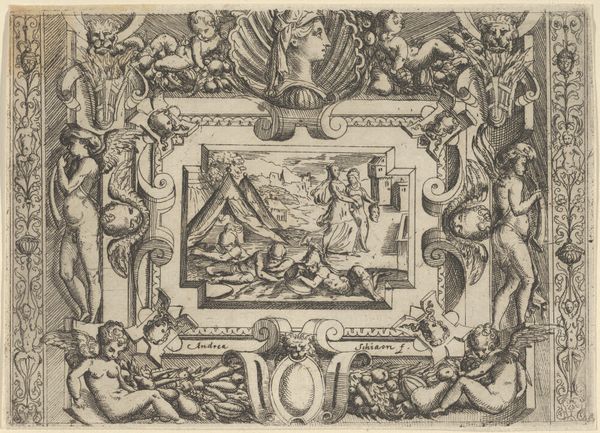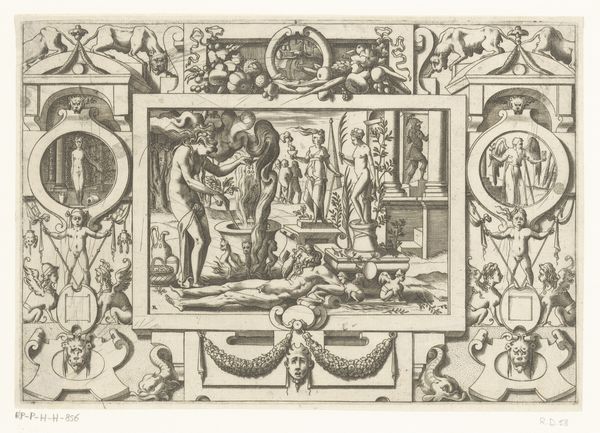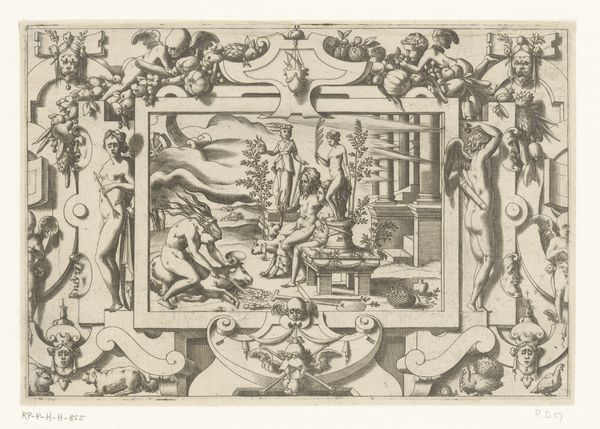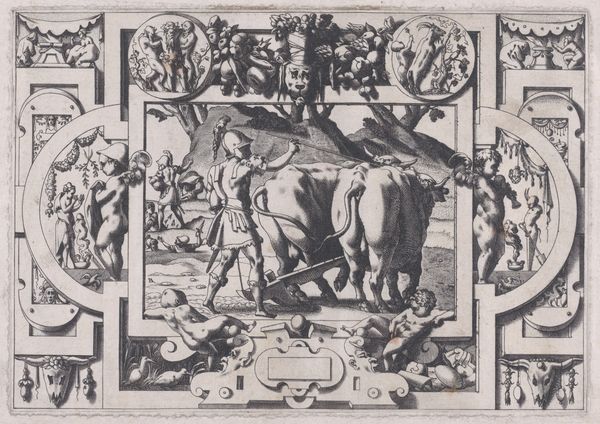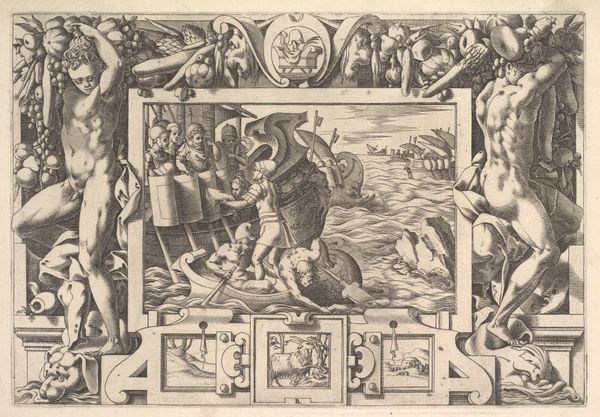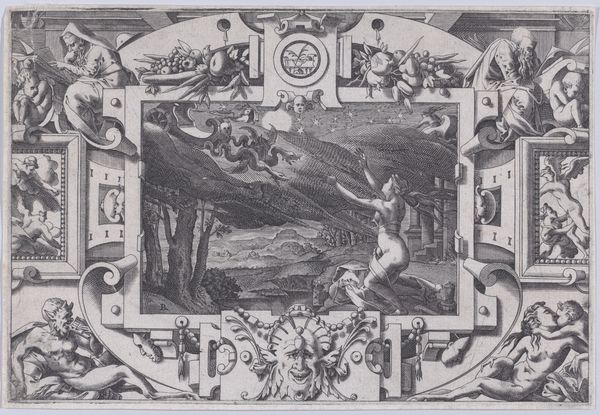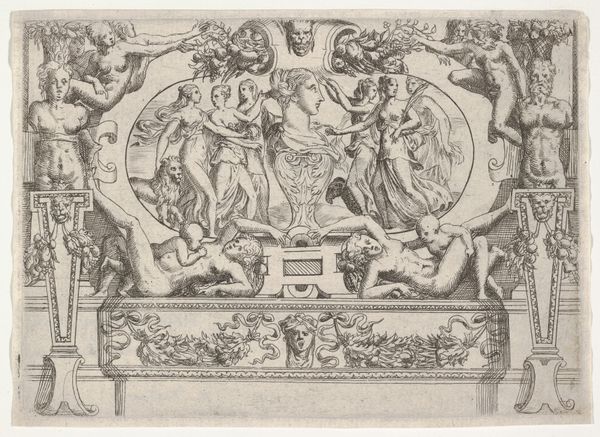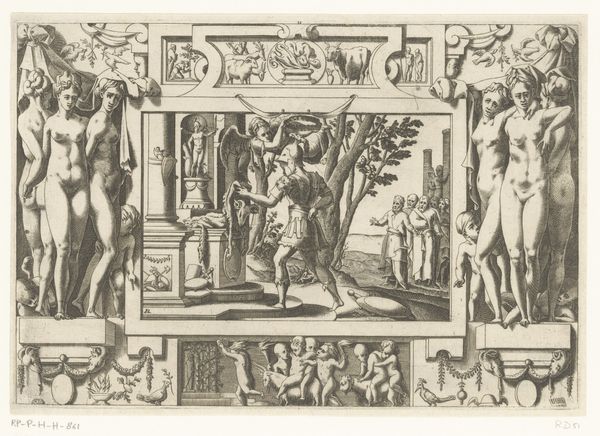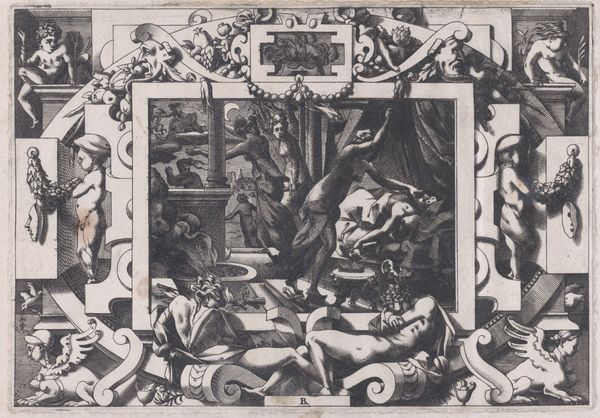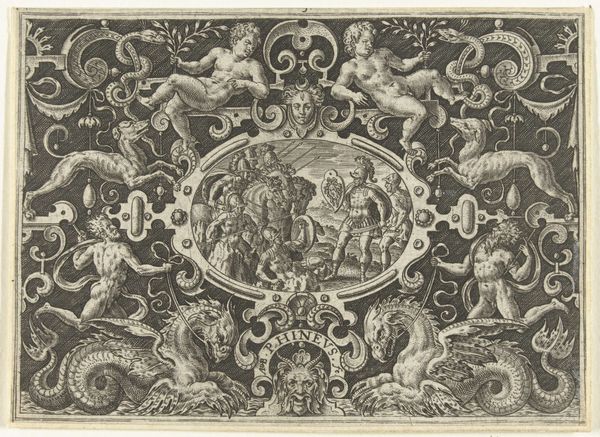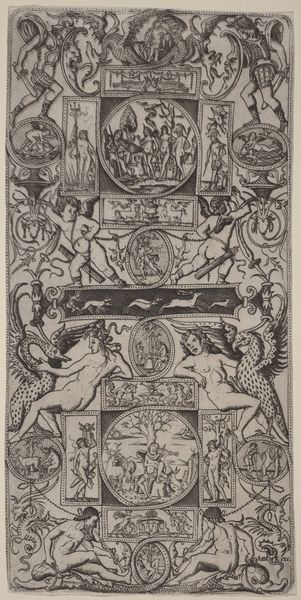
Medea Pours a Magic Potion over Jason (Le roi Aeson tant caduque et chénu en une cuve elle couche tout nu...), from "Jason and the Golden Fleece" 1563
0:00
0:00
drawing, print, engraving
#
drawing
#
pen drawing
# print
#
pen illustration
#
mannerism
#
figuration
#
form
#
11_renaissance
#
line
#
history-painting
#
nude
#
engraving
Dimensions: Plate: 6 5/16 x 9 3/16 in. (16 x 23.3 cm) Sheet: 7 1/2 x 11 5/16 in. (19 x 28.8 cm)
Copyright: Public Domain
Curator: Look at the detail in this print, Editor. It's Ren\u00e9 Boyvin's "Medea Pours a Magic Potion over Jason," created in 1563. It depicts a scene from "Jason and the Golden Fleece." Editor: The density of the linework immediately strikes me. It creates a certain frenetic energy despite the classical subject matter. And what about the frame surrounding the main scene; I see cherubs, figures in active poses and classical elements, what is your reading of it? Curator: This composition resonates deeply when considered through the lens of power dynamics and gender. Medea, often depicted as a sorceress and a woman of agency, is here actively changing Jason’s fate, almost challenging the prescribed patriarchal structure. Her knowledge becomes power in this narrative, influencing transformation, in this case Aeson being rejuvenised, even though her character is complex. Editor: Yes, there is that focus, in the pot being emptied. I wonder about the materiality. This engraving, of course, allows for reproduction and dissemination, making a narrative about transformation, rebirth and perhaps even manipulation widely accessible. What do we know about the context of this piece being commissioned and spread around Europe at this point in time? Curator: Absolutely, the social implications are fascinating. In a time when the Renaissance was challenging and rediscovering classical themes and when printmaking democratized art, Boyvin’s print could have served as an engagement with classical stories, as much as a commentary on knowledge, alchemy, and power. What is more Medea’s complex position in society is there on show to read too. Editor: I am also compelled by Boyvin’s skill in transforming myth into commodity, creating this object to participate in early commodity exchange. I believe an essential discussion should revolve around the skill required in production; how the production of line becomes the generator for capital exchange in the here and now. What thoughts does this idea evoke within you? Curator: The consideration you highlight makes me consider this even more intensely. Considering the circumstances in which Medea exists, the materials themselves symbolize transformation, making this a powerful metaphor for understanding women's agency in historically restrictive structures, also highlighting how craft intersects with gendered identity and social change. It really urges to deeper investigation in both production and historical representation, wouldn’t you agree? Editor: Certainly! Bringing these conversations about craft, gender, and value is vital.
Comments
No comments
Be the first to comment and join the conversation on the ultimate creative platform.
